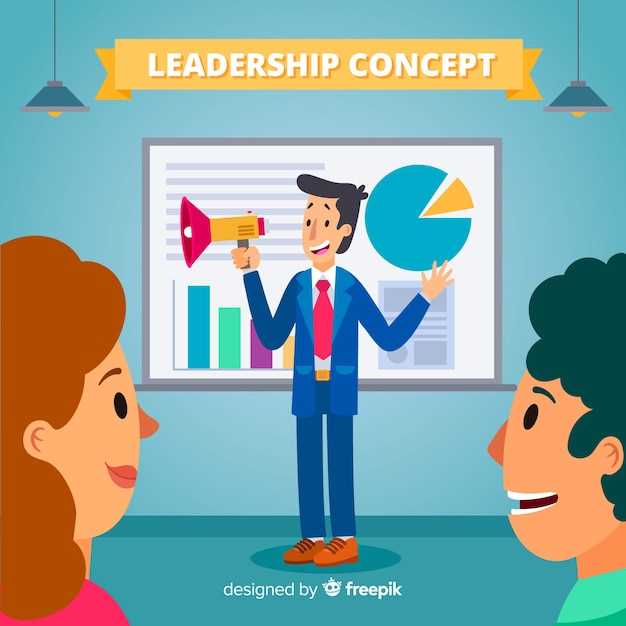Unlocking the Secrets to Engaging and Impactful Presentations for Ultimate Success
Communicating ideas effectively is an art that can transform opportunities. Whether on stage or in a boardroom, the ability to connect with your audience is essential. Captivating a group of listeners requires more than just sharing information. It’s a blend of confidence, charisma, and preparation that can make all the difference.
Think about the moments when you’ve been truly inspired. Those times when a speaker ignited your curiosity or made you feel something profound. This is what every aspiring communicator should aim for. Good communication paves the way for understanding, collaboration, and innovation.
Building an unforgettable experience doesn’t happen overnight. It involves honing various techniques and approaches that resonate with people. Mastering this craft demands dedication and practice, as one learns to navigate the dynamics of audience interaction. Every individual possesses unique qualities that can enhance their communication, transforming standard exchanges into memorable encounters.
As we explore this topic, various methods will come to light. This journey will reveal how to inspire passion and captivate attention. Whether it’s through storytelling, visual aids, or body language, the path to compelling dialogue is multifaceted. Remember, the goal goes beyond mere information sharing; it’s about creating lasting impressions and fostering connections that linger long after the conversation has ended.
Mastering Presentation Skills for Success

To excel in conveying ideas, one must embrace the art of communication. Clear expression can transform thoughts into compelling narratives. The ability to connect with an audience is more than just speaking; it’s about resonance. Your goal is to leave a lasting impression. Whether in a boardroom or a classroom, the impact is significant.
Audiences crave authenticity. Engaging them requires understanding their needs. One must prepare thoroughly and practice diligently. Good preparation breeds confidence. When you believe in your message, it becomes easier to share it.
Storytelling is a powerful tool in this endeavor. A well-crafted narrative captures attention and holds interest. Incorporating personal anecdotes or relatable experiences can enhance connection. Visual aids also play a vital role; they complement verbal communication effectively. The synergy of images and words creates a memorable experience.
Interaction is crucial. Asking questions, inviting comments, and encouraging participation fosters a dynamic atmosphere. Silence is golden, but too much can lead to disengagement. Make use of pauses for emphasis, allowing information to settle.
| Technique | Description |
|---|---|
| Body Language | Non-verbal cues enhance message delivery. |
| Vocal Variety | Changing tone and pace keeps the audience interested. |
| Eye Contact | Establishes trust and connection with listeners. |
| Rehearsal | Practicing boosts confidence and reduces anxiety. |
In conclusion, when one approaches sharing ideas with passion and preparedness, the outcome is often profound. The journey doesn’t end after the last word; feedback is invaluable. Continuous improvement shapes future endeavors. Embrace the process, learn from experiences, and evolve. With each encounter, opportunities to refine emerge, establishing an upward trajectory toward mastery.
Essential Techniques for Engaging Presentations

Creating a memorable experience for your audience requires thoughtful strategies. The right approach can capture attention and foster connection. Engaging talks resonate deeply. They motivate and inspire action, leaving a lasting impression. To achieve this, there are key methods one can apply.
- Know your audience. Understand their interests and expectations.
- Start with a strong opening statement or question.
- Use storytelling to illustrate your points.
- Incorporate visuals to complement your message.
- Practice effective body language to convey confidence.
Each of these techniques can significantly enhance the overall experience during your session, transforming a standard monologue into a dynamic and interactive exchange. Encouraging participation fosters a sense of involvement. Invite questions or incorporate polls. Consider using humor appropriately; laughter can break the ice and create a relaxed atmosphere. Furthermore, a well-structured narrative captivates listeners, ensuring they remain engaged throughout.
- Engagement stems not only from content but delivery as well.
- Vary your tone and pace to maintain interest.
- Utilize pauses effectively; silence can emphasize important points.
- End with a clear call to action, inspiring immediate steps.
In summation, enhancing engagement through diverse techniques can create a profound impact, allowing your message to resonate beyond the initial interaction. Retaining the audience’s attention may seem challenging, yet the rewards are substantial – both for you as a speaker and for your listeners seeking genuine insights.
Understanding Your Audience
Grasping the essence of your listeners is crucial. Knowing their interests creates a connection. Every audience is unique and has distinct preferences. It matters where they come from, what they know, and what they desire. Their response can dramatically shape your message.
Effective communication hinges on this understanding. When you recognize what resonates with them, you can tailor your narrative accordingly. Whether they are seasoned professionals or novices, adapting your content ensures it hits home. Identify their needs, and you’ll find fertile ground for your ideas.
Research your audience before you engage with them. Look for commonalities, their challenges, and aspirations. This information serves as a compass, guiding your approach. It’s more than just presenting information; it’s about creating dialogue. Engaging with their thoughts fosters a vibrant exchange of ideas.
Additionally, consider their demographics and psychographics. Age, profession, cultural background–these factors influence perception. Tailoring your language and examples can bridge gaps. Connecting on a personal level often leads to deeper engagement. Utilize this insight to craft stories and visuals that speak directly to them.
Ultimately, those who understand their audience create lasting impressions. It isn’t merely delivering facts; it’s about igniting interest and fostering a shared experience. By honing in on their perspectives, you establish a rapport that elevates your communication. Embrace this strategy, and witness the transformation in how your messages are received.
Crafting a Compelling Narrative
Creating a captivating story is essential to capturing an audience’s attention. Every great narrative has elements that resonate. It is not merely about facts or data. Emotions play a pivotal role. A well-told story can make concepts memorable and relatable.
Consider the structure carefully. Your tale should begin with an enticing hook. This will pique interest immediately. Then, lead the audience through a journey. Each section should build on the previous one, increasing engagement.
- Begin with a strong opener.
- Add relatable characters or situations.
- Incorporate conflict or challenge.
- Provide a resolution that highlights key takeaways.
When crafting your narrative, think deeply about your purpose. What message do you want to convey? Who is your target audience? By understanding these elements, you can tailor your story more effectively. Using vivid imagery or anecdotes enhances relatability. Connecting with your listeners on a personal level fosters a lasting impact.
In addition, consider varying your tone throughout the tale. A blend of humor, seriousness, and urgency can elevate engagement. Don’t be afraid to pause for effect, allowing your audience to absorb key moments. Each choice you make in crafting this narrative contributes to the overall effectiveness.
Remember, a compelling story is not just about entertainment. It’s a powerful tool for communicating ideas. A narrative can inspire action and provoke thought. When people are invested in a story, they are more likely to remember its message long after it concludes.
Visual Aids and Their Impact
Visual tools play a crucial role in communication. They capture attention and enhance understanding. Audiences often retain information better with visual support. From graphs to images, these elements make ideas more relatable. When used thoughtfully, visuals can transform a simple idea into a vibrant narrative that resonates deeply with viewers.
One of the primary benefits of visual assistance is the clarity it provides. People process visual information quickly. A well-designed slide can convey complex data in a digestible format. In contrast, lengthy text might overwhelm the audience, causing important messages to be lost. This highlights the importance of balancing textual and visual elements for maximum effect.
| Type of Visual Aid | Advantages |
|---|---|
| Charts | Simplify data and highlight trends clearly. |
| Images | Create emotional connections and enhance storytelling. |
| Videos | Illustrate concepts dynamically, allowing for deeper engagement. |
| Diagrams | Organize information logically and showcase relationships. |
Using various visual formats can significantly enhance the overall effectiveness of the communication process. When integrated seamlessly, they not only complement the spoken word but also illuminate key points, helping the audience to visualize concepts and ideas in real-time. Each element should serve a purpose, driving home the intended message while captivating viewers’ attention. The result is a more immersive experience that fosters greater retention and understanding.
Body Language and Non-verbal Communication
In any interaction, the way one uses their body speaks volumes. Gestures, posture, and facial expressions contribute immensely to the message conveyed. Often, these non-verbal cues can carry more weight than spoken words. Effective communication isn’t solely about what is said; it also encompasses how it is presented. Understanding this dynamic can significantly enhance the overall impact of your exchange.
Body language shapes perceptions. People naturally interpret signals from others. A confident stance might inspire trust, while crossed arms could suggest discomfort. These visual signals help to create an atmosphere of connection or disconnect. When a speaker aligns their physical presence with their message, it reinforces clarity and purpose.
Moreover, elements such as eye contact play a crucial role. Maintaining appropriate gaze engages the audience and builds rapport. Too little eye contact might suggest insecurity or disinterest, whereas too much can feel intimidating. A balance is key. It’s not merely about glancing–it’s about fostering an interactive dialogue through visual engagement.
Facial expressions are powerful tools in communication. A simple smile can warm the atmosphere, while a frown may evoke concern. Being aware of your expressions while speaking allows for greater authenticity. In essence, the face is often the window to one’s feelings–what you really mean can sometimes be reflected there, even if words fail to express it.
Furthermore, the overall energy you project greatly influences the audience’s reactions. Enthusiasm is contagious; an energized speaker often captivates listeners, holding their attention effectively. The underlying emotional state can either enhance or detract from the conveyance of ideas. If the body harmonizes with the message, it creates a captivating experience.
Practicing Your Delivery
Crafting an exceptional talk involves more than merely understanding your content. It’s about conveying your thoughts with clarity and confidence. Frequent rehearsals can establish a natural flow. You want to connect with your audience, making every word count. Regular practice transforms anxiety into enthusiasm.
Utilize mirrors or cameras to observe yourself while speaking, and adjust your tone, pace, and chemistry. This strategy can reveal unconscious habits that may detract from your overall message. Gather a trusted group of friends or colleagues to provide constructive feedback. Their insights can offer new perspectives and valuable recommendations.
Engage in different types of practice sessions–solo performances, small gatherings, or even virtual simulations. Each setting gives you unique experiences and builds your adaptability. Try to rehearse in environments similar to where you’ll present to simulate real conditions. Becoming familiar with the context alleviates nervousness and cultivates assurance.
Remember, repetition is key. The more you practice, the more fluid your words will be. Additionally, immersing yourself in various delivery methods can enhance your versatility. Each approach hones your adaptability and encourages spontaneity during the actual engagement.
Concentrate not only on what you say but also on how you say it. Body language, facial expressions, and vocal variety play significant roles in how your message is received. A compelling narrative can captivate listeners, urging them to hang on to every word. The goal is to make your session resonate long after you’ve finished speaking.
In conclusion, consistent practice leads to a polished and self-assured persona. It allows your ideas to shine brightly, transforming a simple exchange into a memorable experience. Embrace the journey of improvement; each effort paves the way toward extraordinary connections with your audience.
Improving Public Speaking for Academic Excellence

Effective verbal communication plays a crucial role in academic environments. It shapes how ideas are conveyed and understood. Those who articulate their thoughts clearly often achieve better results. Strong orators can capture attention and inspire action. This ability to influence peers or educators cannot be overstated, as it opens doors to opportunities.
Whether you’re presenting research findings or engaging in class discussions, the way you express yourself can drastically affect your academic performance. A well-structured argument, delivered with confidence, garners respect and consideration from the audience. Those who hone this craft enhance their overall learning experience, leading to profound comprehension and retention of material.
Practice is vital. Rehearsing in front of a mirror or recording yourself can illuminate areas for improvement. Seek feedback from friends or mentors who can provide constructive criticism. Understanding your audience enhances connection and responsiveness. This knowledge allows you to tailor your message, making it more relatable and impactful.
Join clubs focused on communication, such as debate teams or public speaking organizations. These settings encourage risk-taking and provide ample practice. Engaging regularly with peers fosters a supportive atmosphere for growth. Moreover, studying renowned speakers can offer insights into successful techniques of expression. Observe their tactics, note their pacing, and be inspired by their passion.
Remember that confidence often stems from preparation. Know your material inside out to reduce anxiety during presentations. A deep understanding translates to a more natural delivery. As you articulate your thoughts effectively, the clarity of your vision will shine through, positively influencing how others perceive your intelligence and insight.
Overcoming Fear and Anxiety
Many individuals experience trepidation when faced with public speaking. It’s a common hurdle, affecting people from all walks of life. The fear can be paralyzing, preventing some from sharing their thoughts entirely. However, understanding and addressing this anxiety is crucial for growth and confidence. Recognizing these emotions as normal is the first step toward overcoming them.
Numerous techniques can help diminish feelings of apprehension. Practice is essential; the more you rehearse, the more familiar and comfortable you become with your material. Additionally, visualization can be a powerful tool–imagine yourself speaking confidently and successfully. Breathing exercises can also be effective, providing a calming effect before you step onto the stage. Surrounding yourself with supportive peers may alleviate that intense pressure.
When you combine preparation with a positive mindset, you create a strong foundation to build upon. Instead of emphasizing potential failures, focus on the possibility of success. This shift in perspective can be transformative. Remember, everyone has room for improvement; even seasoned speakers experience nerves. By embracing the challenge and engaging in self-reflection, you can empower yourself to face the scenario with poise.
Structuring Your Academic Talk
When preparing for an academic discourse, the organization of your content is essential. A coherent structure helps to guide the audience through your thoughts. It keeps their attention focused and ensures your message is understood. Without a clear framework, even the most compelling ideas can become lost in delivery.
To create an effective structure, consider the following elements:
- Introduction: Capture attention and present your thesis statement.
- Main Body: Develop key points supported by evidence and examples.
- Conclusion: Summarize critical findings and suggest future directions.
Your introduction sets the tone. It should intrigue listeners and succinctly present the topic at hand. After that, transition into the main body, which is the heart of your talk. Here, flesh out your arguments. Use clear and logical progression to ensure comprehension. Remember to include transitions between points to maintain flow.
The conclusion serves as a powerful wrap-up. It shouldn’t merely restate points. Instead, it should reinforce your argument and leave a lasting impression. End with a strong statement or question that encourages further thought. A well-structured academic talk not only informs but also inspires action and reflection.
Video:
How to Do a Presentation – 5 Steps to a Killer Opener
How to Do a Presentation – 5 Steps to a Killer Opener by Rule The Room 8,416,755 views 11 years ago 7 minutes, 34 seconds
Q&A:
What are the key elements of an engaging presentation?
An engaging presentation typically includes several key elements: a strong opening to grab attention, a clear and structured outline, relatable storytelling, visual aids that complement the spoken content, and interactive components to involve the audience. Practicing good body language and vocal variety is also essential to maintain interest and establish a connection with your audience. Remember, an engaging presentation not only delivers information but also inspires and resonates with viewers.
How can I reduce anxiety before giving a presentation?
Reducing anxiety before a presentation involves a combination of preparation and mindset shifts. Start by thoroughly preparing your material and practicing multiple times. Familiarity with your content can significantly lessen anxiety. Techniques like deep-breathing exercises, visualization (imagining yourself giving a successful presentation), and positive affirmations can also help calm nerves. Additionally, try to reframe your anxiety as excitement; this shift in perspective can serve to energize you rather than paralyze you. Engaging in a brief physical activity before your presentation can also help release anxious energy.
What role does storytelling play in presentations?
Storytelling is a powerful tool in presentations as it helps to humanize the content and make it relatable. By weaving narratives into your presentation, you can capture your audience’s attention and make complex information easier to understand and remember. Stories can illustrate key points, evoke emotions, and provide real-world examples that support your message. Effective storytelling involves character development, conflict, and resolution—elements that make any presentation more compelling. Additionally, personal stories can create a sense of authenticity and connection between the speaker and the audience.
Can you provide tips for using visual aids effectively during presentations?
When using visual aids in your presentations, it’s important to ensure they enhance rather than distract from your message. Here are some tips: first, keep slides uncluttered by using minimal text and high-quality images or graphs to illustrate points. Utilize large fonts and contrasting colors for readability. Limit each slide to one main idea to avoid overwhelming the audience. Remember to maintain eye contact with your audience instead of reading directly from your slides. Lastly, rehearse with your visuals to ensure the timing and flow of your presentation aligns with your aids, allowing a seamless integration of verbal and visual information.
What are some common mistakes to avoid when giving a presentation?
Common mistakes in presentations include being overly reliant on slides, which can lead to a lack of engagement. Another mistake is failing to know your audience; tailoring your content to their interests and level of understanding is crucial. Speaking too fast due to nerves can lead to misunderstandings, so pacing is important. Additionally, ignoring non-verbal communication—such as body language and eye contact—can hinder your effectiveness. Lastly, avoid overloading your presentation with information; it’s better to present fewer points well than to overwhelm with excessive details. Always aim for clarity and conciseness.
